Piano Music: A Deeper Look into Chord Structures
In the last session, titled "Music Theory Lesson 5: Modes," we explored the structure of major and minor scales. However, to truly grasp piano music, we must go beyond scales—chords are fundamental elements of both harmony and musical expression. So, what exactly is a chord? How are chords classified? And how do inversions, duplications, or omissions affect them?
What Are Chords?
A chord is formed when three or more notes are played at the same time. The two most common types found in piano music are triads and seventh chords. This lesson will focus on these two categories while also briefly touching on more advanced chord types toward the end.
Triads
Triads consist of three notes stacked in intervals. When these notes align on adjacent staff lines or spaces, we call it a triad.
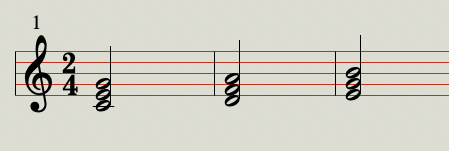
Each triad includes a root, a third, and a fifth.
Depending on the intervals between these notes, triads can be:
l Major: Root + Major Third + Perfect Fifth
l Minor: Root + Minor Third + Perfect Fifth
l Augmented: Root + Major Third + Augmented Fifth
l Diminished: Root + Minor Third + Diminished Fifth
For example, take the E major triad:

E to G# is a major third (4 half steps)

G# to B is a minor third (3 half steps)
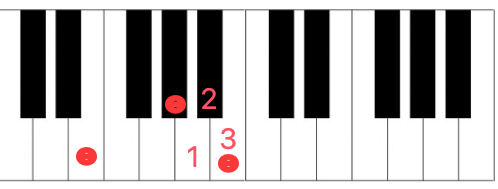
Together, they create a major triad.
Whether you’re an aspiring pianist or a music composer, mastering triads is essential to creating compelling harmonies. For practice-ready triad exercises and beginner-friendly sheet music, check out SheetMusicGo—a dedicated platform for curated piano music.
Triad Inversions
Inversions occur when the order of notes in a chord changes, placing a different note at the bottom (bass). The types of triad inversions are:
1. Root Position – Root is the lowest note
2. First Inversion – Third is the lowest note
3. Second Inversion – Fifth is the lowest note
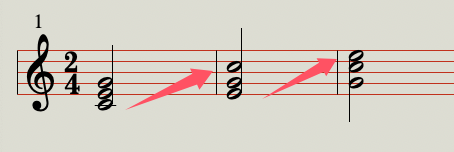
Though the bass note changes, the chord’s function and name remain the same. These variations give piano music a sense of motion and harmonic flexibility.
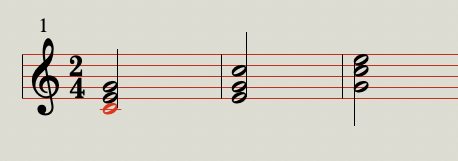
Seventh Chords
A seventh chord includes four notes: the root, third, fifth, and seventh.
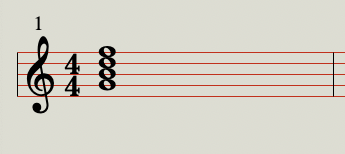
If all four notes fall on adjacent lines or spaces in the staff, it's visually a seventh chord. The interval between the root and the seventh defines the chord type.
Types of seventh chords include:
l Major Seventh: Root + Major Third + Perfect Fifth + Major Seventh
l Minor Seventh: Root + Minor Third + Perfect Fifth + Minor Seventh
l Dominant Seventh: Root + Major Third + Perfect Fifth + Minor Seventh
l Diminished Seventh: Root + Minor Third + Diminished Fifth + Diminished Seventh
l Half-diminished Seventh: Root + Minor Third + Diminished Fifth + Minor Seventh
Take the G dominant seventh chord as an example:

1. The base triad (G–B–D) is major
2. The seventh (G–F) is a minor seventh
Hence, this is a dominant seventh chord.
Whether you're analyzing Beethoven or jazz ballads, seventh chords are omnipresent in both classical music and modern arrangements. Want to see how they appear in famous works? Browse our classical sheet music library at SheetMusicGo—ideal for both study and performance.
Inversions of Seventh Chords
Seventh chords also have inversions:

1. Root Position – Root is lowest
2. First Inversion – Third is lowest
3. Second Inversion – Fifth is lowest
4. Third Inversion – Seventh is lowest
Again, while the voicing changes, the chord’s name and quality remain intact. Understanding these helps pianists create smoother transitions in harmonic progressions.
Chord Duplications and Omissions
In real-world applications, chords may contain repeated notes or leave out certain components. For instance:
1. Duplication: Repeating a chord tone an octave higher or lower
2. Omission: Skipping the third or fifth for a more open sound
These techniques are commonly used in arrangements for solo piano music, where hand span and voicing choices are critical.
Advanced Chord Types
More complex chords used in modern or experimental music include:
1. Extended Chords: Ninth, eleventh, and thirteenth chords

2. Quartal/Quintal Chords: Built using fourths or fifths instead of thirds

3. Suspended Chords: Replace the third with a second or fourth

4. Special/Custom Chords: Invented by music composers to evoke specific atmospheres

These types are more commonly used by seasoned pianists or professional arrangers. While beginners don’t need to master them all at once, knowing they exist offers a glimpse into the vast creative world of harmony.
If you’re ready to explore how these chords are used in famous sonatas, jazz pieces, or movie scores, visit SheetMusicGo. You’ll find downloadable sheet music with clearly labeled chords—perfect for anyone learning, arranging, or composing piano music.












